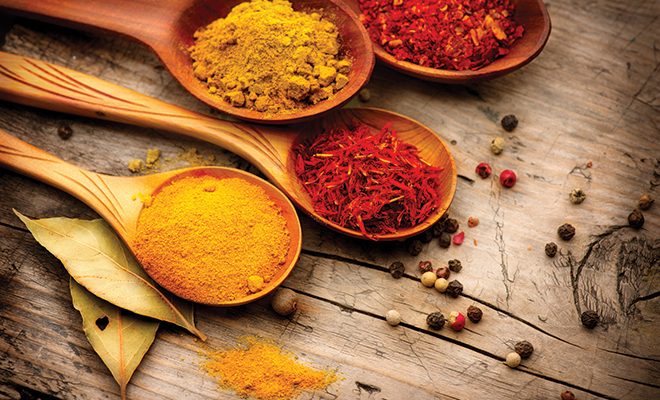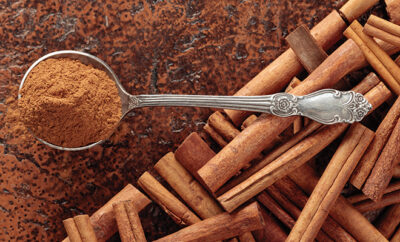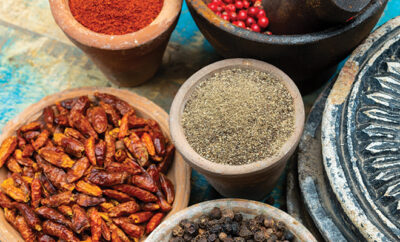
Asian Spices
If you love to cook, you probably remember when and how you began learning your way around the kitchen. Maybe you helped Mom or Dad fix dinner, or you baked holiday goodies with family and friends. With practice and experience, home cooks grow from helping out in the kitchen to running the show in their own kitchen, acquiring favorite go-to recipes, the right tools for each culinary task, and a pantry stocked with familiar ingredients.
But even the best cooks appreciate it when someone else does the cooking. Whether you’re at a dinner party or a restaurant, there is the possibility that you’ll experience a dish that is new to you. Have you ever come across such a totally new set of flavor combinations that you try to figure them out? When you realize you cannot, there is the “aha” moment when you know you have to find the recipe for that dish.
The first mystery dish I tasted was hot and sour soup. It was remarkable; it did have some spicy heat, but the soup had no red pepper flakes or hot pepper oil. The surface of the soup had a few drops of some kind of oil I had never tasted, and it was delicious. There were other new flavors in the soup that were excellent and totally unfamiliar. I had to find a recipe for hot and sour soup!
When I finally found a recipe, the culinary secrets of the mystery dish were revealed. The “hot” part of the dish came from white pepper, which I could taste but couldn’t see in the broth. The oil was sesame oil, which imparted an intriguing and delicate flavor. Another unfamiliar ingredient was dried shiitake mushrooms, soaked in hot water that was subsequently added to the broth; the mushrooms were chopped and added to the soup. The “sour” part of the recipe was rice wine vinegar, which I had never tasted. Shopping for these ingredients was a challenge in itself. Making the recipe for the first time was quite a project.
More recently, I tasted another mystery dish. Once again, it was soup: Vietnamese Pho. The tantalizing and unfamiliar flavors were far more complex. Once again, I had to find the recipe. The spices used in the dish included star anise, stick cinnamon, cloves, allspice and peppercorns. Even the broth was more complicated. Authentic pho involves roasting soup bones with onions, then simmering the roasted ingredients for hours, followed by chilling, defatting, straining and finishing with more spices, vegetables, herbs and protein.
But any good cook knows that after you’ve followed a recipe once, you can start taking shortcuts. I’ve been known to use packaged ramen noodle soup as a base, adding hot and sour soup ingredients, creating a dish that’s as tasty as it is economical. And if I’m craving pho but short on time, I make faux pho by using packaged broth as a shortcut.
Coincidentally, the two dishes that caught my attention were Asian. You may use some of the ingredients in baking and other recipes. Let’s look at how they are used in Asian cuisine.
Cloves are used whole to flavor soup stocks, and ground cloves are used in stir fries, stews and sweets. Its strong flavor is best used in small amounts so that it does not overpower other flavors.
Coriander, also known as Chinese parsley and cilantro, is a staple in Chinese, Indian, Greek and Mexican cuisine. The seeds are used to flavor roasted meats and crushed to blend with spice mixes such as garam masala. The leaves are used in soups, stews and salads.
Pungent ginger root has been used for centuries in both cooking and herbal medicine in China and India. Peeled, sliced and chopped or minced, ginger root adds flavor to stir fries, sauces, smoothies and rice. Powdered ginger is not quite as strong, but is often blended into spice mixes.
Sesame seeds can be used whole, steamed or toasted as garnish. Sesame oil is used in stir fries, soups and other dishes.
Star anise seed pods are lovely and impart a licorice flavor similar to anise seed and fennel.
Cardamom is associated with Scandinavian cookies and breads, but in Asia and India it’s used to make teas and flavor coffee and is added to blended spices. It’s also an ingredient in curry sauce.
Shiitake mushrooms are sold fresh or dried. Their unique flavor complements stir fries and soups. When you reconstitute dried mushrooms, remember to save the water for soup stock.
Get to know these ingredients by playing with them. Add them to your favorite tea, or simmer them in broth. Kick your morning coffee up a notch by smashing a cardamom pod and tossing it in the brew basket.
And if anyone asks how you discovered a new and mysterious flavor profile, just smile and say, “It was Occidental.” HLM
Sources: anniesremedy.com, asian-fusion.com, blog.seasonwithspice.com, foodservicewarehouse.com, southeastasianfood.about.com and thekitchn.com.







